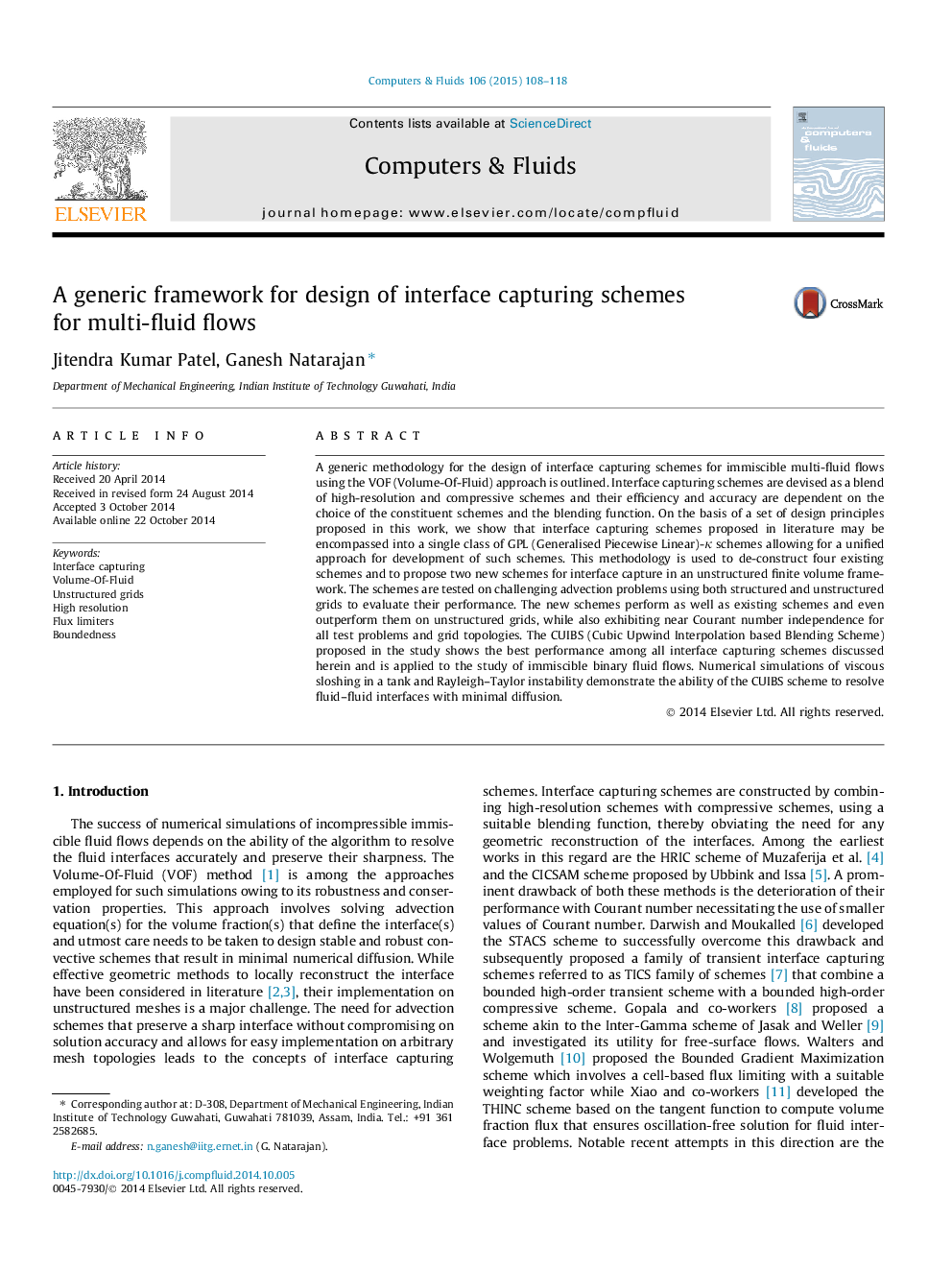| Article ID | Journal | Published Year | Pages | File Type |
|---|---|---|---|---|
| 761630 | Computers & Fluids | 2015 | 11 Pages |
•Designed a set of guidelines for developing interface capturing schemes.•Applied these guidelines to analyse existing schemes.•Constructed a generic unified framework for interface capturing schemes.•Developed two new schemes for interface capture based on the framework.•Demonstrated the applicability of new schemes for multi-fluid flows on unstructured grids.
A generic methodology for the design of interface capturing schemes for immiscible multi-fluid flows using the VOF (Volume-Of-Fluid) approach is outlined. Interface capturing schemes are devised as a blend of high-resolution and compressive schemes and their efficiency and accuracy are dependent on the choice of the constituent schemes and the blending function. On the basis of a set of design principles proposed in this work, we show that interface capturing schemes proposed in literature may be encompassed into a single class of GPL (Generalised Piecewise Linear)-κκ schemes allowing for a unified approach for development of such schemes. This methodology is used to de-construct four existing schemes and to propose two new schemes for interface capture in an unstructured finite volume framework. The schemes are tested on challenging advection problems using both structured and unstructured grids to evaluate their performance. The new schemes perform as well as existing schemes and even outperform them on unstructured grids, while also exhibiting near Courant number independence for all test problems and grid topologies. The CUIBS (Cubic Upwind Interpolation based Blending Scheme) proposed in the study shows the best performance among all interface capturing schemes discussed herein and is applied to the study of immiscible binary fluid flows. Numerical simulations of viscous sloshing in a tank and Rayleigh–Taylor instability demonstrate the ability of the CUIBS scheme to resolve fluid–fluid interfaces with minimal diffusion.
